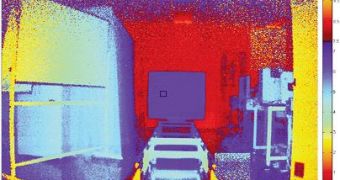Camera sensors usually compete according to their expertise in capturing colors, but Samsung's latest invention does more than that.
Certainly, the new camera sensor is fully capable of storing normal images, in the RGB (red blue green) spectrum.
What it also does, though, is record depth information at the same time. The ToF (time-of-flight) method is employed to achieve this effect.
Samsung has wanted to make a technology that integrates RGB pixels and pixels for obtaining range images (Z pixels) for a long time now.
Unfortunately, merging those two functionalities proved difficult, because the near-infrared filter was not without its limitations.
Even Microsoft's Kinect technology uses a range image sensor based on the “structured light method” to keep track of motions, while a regular image sensor acts separately.
The stereo method is even more complicated, needing at least two cameras for a parallax.
Samsung's new invention, a single sensor that performs both tasks, will make gesture-based controllers, and anything else that could find a use for it, smaller.
It will also be easier to add range image measurement functions to digital cameras and camcorders. In other words, cameras themselves will gain gesture recognition in the near future.
Spec-wise, the sensor developed at the Samsung Advanced Institute of Technology (SAIT) snaps RGB images in 1,920 x 720 pixels resolutions, while depth images come in 480 x 360 pixels.
In its manufacturing the 0.13μm CMOS image sensor technology and a process for FSI (front-side illuminated) technology were involved. Should BSI (back-side illuminated) technology be applied, the cross-talk to the RGB pixels by the near-infrared light for the ToF will be easier to prevent. In other words, BDI tech might double the quantum efficiency.
If anyone wants to learn additional info in the hope of making more sense of all this, they can go here.

 14 DAY TRIAL //
14 DAY TRIAL //